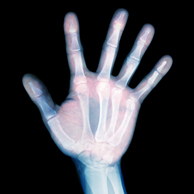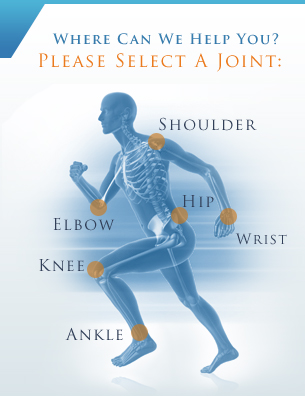
Procedures: General
Arthritis Treatment
 Nearly one in three adults suffers from the swollen, stiff and painful joints of arthritis. Arthritis is the most common chronic ailment among the elderly, although it can affect people of any age, including children.
Nearly one in three adults suffers from the swollen, stiff and painful joints of arthritis. Arthritis is the most common chronic ailment among the elderly, although it can affect people of any age, including children.
There are over 100 different types of arthritic diseases. The most common is osteoarthritis, a degenerative joint disease in which the cartilage protecting the bone ends wears away. Rheumatoid arthritis is a chronic condition in which the body's own immune system attacks the joint lining.
Treatment typically involves a combination of anti-inflammatory medication and devices to relieve stress on the joint (canes, crutches or splints). Regular exercise, weight loss for overweight patients, and cortisone injections may also be helpful. In severe cases, orthopedic surgery such as joint replacement may be the only way to improve or restore function and relieve pain.
Biceps Tendon Rupture Treatment
Tendon rupture in the upper extremities commonly affects the biceps tendon, and may occur at either end. This tendon can easily be damaged as a result of injury, overuse or age, which may cause the tendon to become inflamed or to tear in more severe cases. Patients with tendon rupture often experience bruising, deformity, pain and weakness with movement. You may notice a popping sound if the tendon tears completely.
Treatment for a tendon rupture often includes a period of rest and immobilization, as well as applying ice and taking anti-inflammatory medication. Complete tears, or those that do not heal with conservative treatment, may require surgery to fuse the tendon back down to the bone and relieve symptoms.
Cartilage Repair Surgery
Cartilage is the smooth coating on the end of the bones that provides cushioning and support for comfortable, fluid movement. Cartilage damage occurs as a result of injury or degeneration and can lead to severe pain and arthritis. The cartilage eventually wears away and leaves the bone unprotected. Fortunately, there are now several techniques used to repair damaged cartilage and restore normal movement.
Cartilage repair is a relatively new field and long-term results are still not proven. These procedures aim to restore movement with the best possible tissue and to prevent further cartilage damage. Two common procedures used in cartilage repair include:
Autologous Chondrocyte Implantation - This procedure takes a sample of healthy cartilage and multiplies it in large quantities outside the body before being implanted back onto the bone. This newly grown cartilage coats the bone and provides regained support.
Osteochondral Autograft Transplant (OATS) - This procedure takes healthy cartilage from another area of the bone that does not bear weight and transplants it to the damaged, weight-bearing area. This is used for smaller defects and involves filling holes with small transplant materials.
Corticosteroids
 Corticosteroids are a type of medication used to reduce inflammation and treat conditions such as arthritis, lupus, scleroderma and irritable bowel disease. Corticosteroids are similar to cortisol, a hormone that is naturally produced in the adrenal cortex to help the body deal with stress and manage salt and water levels.
Corticosteroids are a type of medication used to reduce inflammation and treat conditions such as arthritis, lupus, scleroderma and irritable bowel disease. Corticosteroids are similar to cortisol, a hormone that is naturally produced in the adrenal cortex to help the body deal with stress and manage salt and water levels.
Corticosteroid treatments can be administered through injection, topical application or orally. Although they do not relieve pain on their own, their ability to reduce inflammation usually results in pain relief as well. The relief is often temporary, so multiple treatments may be needed. Corticosteroid injections can also help cure inflammation in small areas in conditions such as bursitis and tendonitis.
Corticosteroid injections offer immediate results with very few side effects. The injection usually causes only minimal pain, while oral doses cause no pain at all. Eventually, cortisone production will resume naturally and the steroids may not be needed. Talk to your doctor for more information on corticosteroids.
Nerve Block
A nerve block is a treatment used to both treat and diagnose severe pain. The block is placed by injecting a substance like alcohol or phenol into or around the nerve to numb it and interrupt the pain signals sent to the brain.
A therapeutic nerve block is used to treat pain and often contains a local anesthetic that will relieve pain. Nerve blocks used to treat chronic pain can work for up to 6-12 months and can be repeated as needed. They can be helpful to cancer patients. Diagnostic nerve blocks insert an anesthetic for a certain amount of time to determine the source of the pain.
However, nerve blocks can cause serious side effects such as paralysis and damage to arteries. They can also cause low blood pressure, puncturing of the lung or damage to the kidney. Some newer blocks use extreme heat or cold instead of a chemical to prevent some of these side effects. Nerve blocks are sometimes used to avoid surgical procedures, but are not always the answer.









